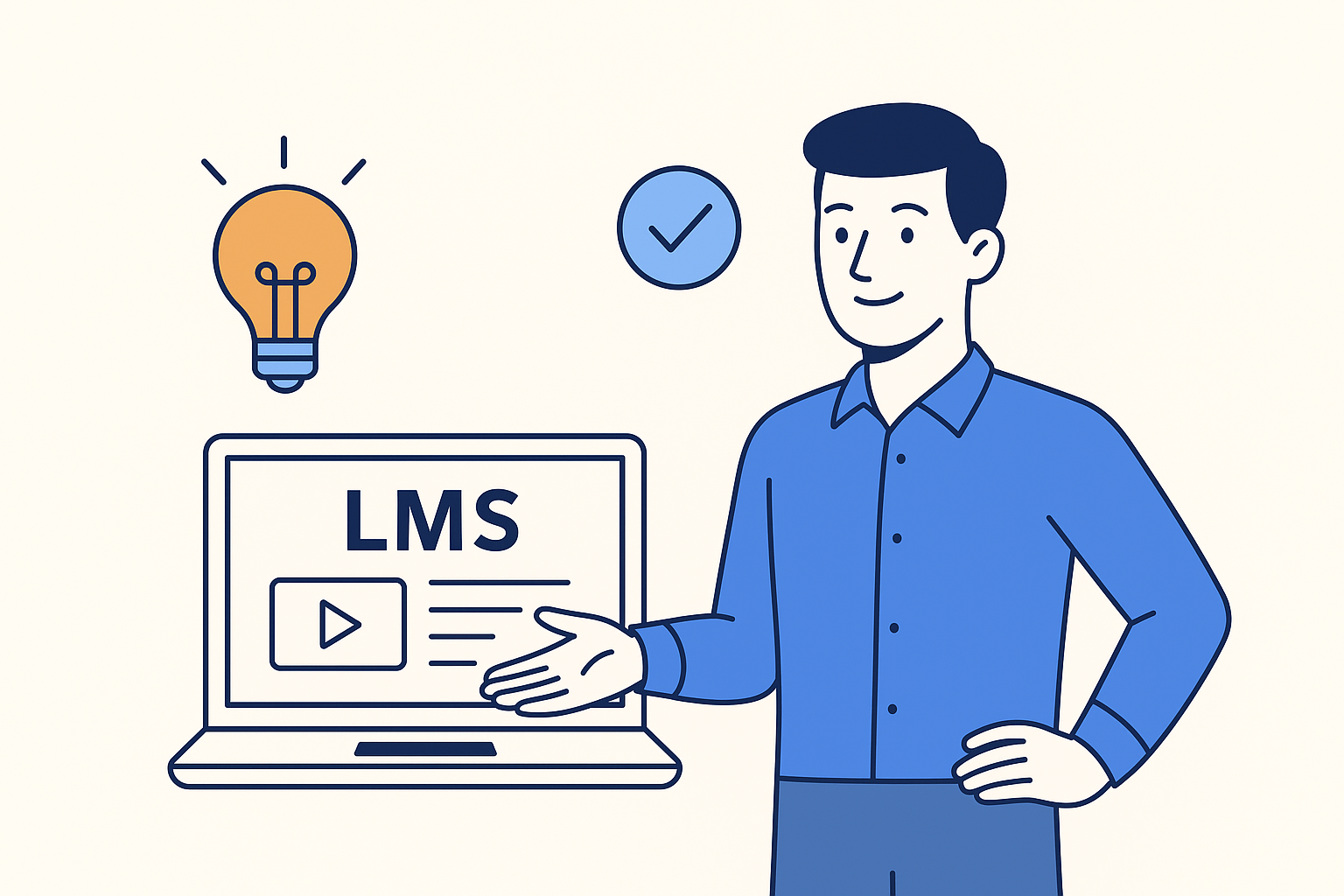In today’s competitive landscape, small businesses face a challenging dilemma: on one hand, they need to continuously upskill their teams to stay afloat, on the other hand, resources are limited and complex corporate solutions seem like an unattainable luxury. This is where LMS (Learning Management System) for small business becomes not just a useful tool, but a true growth catalyst.
Why Learning Management Systems Are Critical for Small Business
Picture this: your best salesperson goes on vacation, and sales drop by 30%. Or a new employee spends a month learning internal processes, distracting colleagues from work. Sound familiar? These are classic symptoms of lacking a systematic approach to learning.
In small business, every employee is worth their weight in gold. When someone gets sick or quits, their knowledge and skills often leave with them. LMS solves this problem by creating a unified knowledge base and standardized learning processes.
Unique Learning Challenges for Small Business
Small businesses face unique challenges:
Limited budget — no ability to spend hundreds of thousands on corporate universities and expensive platforms.
Time constraints — every day counts, and lengthy implementation of new systems can paralyze operations.
No IT department — no one to configure complex integrations and train employees on new systems.
High speed of change — small business must quickly adapt to market changes, and the learning system must keep pace with these changes.
What Small Business LMS Should Be Capable Of
The ideal LMS for small business is fundamentally different from bulky corporate monsters. Here are the key requirements:
1. Instant Implementation
Forget about month-long implementation projects. Modern small business LMS should launch within minutes. Install the app in your CRM — and you can create your first course.
2. Intuitive Design
If you need a 50-page manual to master the system — it’s not for you. The interface should be intuitively clear so any employee can start learning without additional training.
3. Flexibility Without Complexity
The system should easily adapt to your processes: create onboarding programs for newcomers, professional development courses for experienced employees, testing and certification.
4. Integration with Existing Systems
Nobody wants to juggle dozens of different platforms. LMS should integrate into already-used CRM and ERP systems, becoming their natural extension.
5. Economic Efficiency
Costs should be predictable and affordable. Ideally, there are no user limitations — you pay for functionality, not for each employee.
Practical Use Case Scenarios
New Employee Onboarding
Instead of assigning a mentor for a month, create an onboarding program in LMS. Newcomers study materials at a comfortable pace, take tests, and HR specialists track progress. Onboarding time is reduced by 2-3 times.
Sales Team Upskilling
Upload sales techniques, product information, and objection-handling scripts to the system. Salespeople can review materials before important meetings or refresh knowledge in their free time.
Certification and Assessment
Instead of formal annual meetings, conduct regular knowledge checks through LMS. This allows identifying knowledge gaps and addressing them promptly.
Company Knowledge Base
Create centralized storage for all regulations, instructions, and best practices. Employees will always find current information, and you’ll stop answering the same questions repeatedly.
Measurable LMS Implementation Results
Properly implemented LMS delivers concrete, measurable results:
- Reduce new employee onboarding time by 40-60%
- Increase team productivity by 15-25%
- Reduce staff turnover through better preparation
- Standardize processes and reduce error rates
- Free manager time from routine training
Common LMS Selection Mistakes
Mistake #1: Choosing “for Growth”
Don’t buy a system with features you don’t need now. Better to start with a simple solution and expand functionality as needed.
Mistake #2: Ignoring Integrations
LMS that doesn’t integrate with your main systems will create more problems than it solves.
Mistake #3: Implementation Complexity
If launching the system requires an IT consultant, think twice. In small business, systems should be implemented by regular users.
Mistake #4: Hidden Costs
Pay attention not only to subscription costs, but also to additional payments for users, integrations, and technical support.
The Future of Small Business Learning
Trends already changing the approach to corporate learning:
Microlearning — short 5-10 minute lessons that can be completed anytime.
Mobile learning — ability to learn from phone while traveling, during breaks, at home.
Gamification — game elements make learning engaging and increase involvement.
Personalization — system adapts to specific employees, offering relevant content.
AI integration — smart systems analyze progress and recommend optimal learning paths.
How to Start: Step-by-Step Plan
Step 1: Audit Current Learning Processes
Analyze how learning currently happens in your company. Which processes take the most time? Where do errors occur most frequently?
Step 2: Define Priorities
Don’t try to digitize everything at once. Start with the most critical processes — newcomer onboarding or sales training.
Step 3: Choose the Right LMS
Focus on implementation simplicity, integrations, and cost. Be sure to try the demo version.
Step 4: Create First Content
Start simple — digitize existing instructions and regulations. Gradually add interactive elements.
Step 5: Implement Gradually
Don’t launch everything at once. Start with one department or process, get feedback, and scale successful experience.
Conclusion
LMS for small business isn’t a luxury — it’s a necessity. In an era when knowledge quickly becomes obsolete and markets demand constant adaptation, only companies with well-trained teams will remain competitive.
A properly chosen learning system pays for itself within the first months of use by reducing new employee onboarding time and increasing existing team efficiency.
Try the modern Brusnika.LMS — a system created specifically for small and medium business. Instant integration with Bitrix24 and Zoho CRM, intuitive interface, and affordable pricing will help you quickly launch effective learning without complex implementations. Get 3 months of free access and see for yourself!

